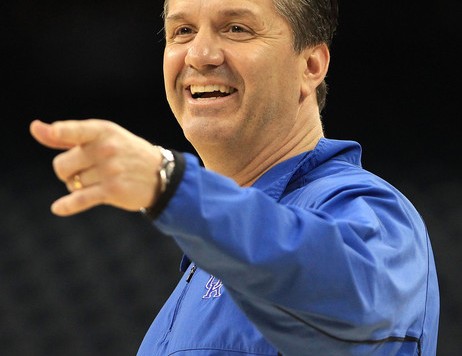Sure, John Calipari has never had a recruiting class ranked lower than second at Kentucky. It’s also true that whenever Calipari has struggled, he has usually been able to right the ship before it was too late.
This dynamic was never more apparent than in 2014, when Calipari took an eighth-seeded team to the national championship game, and it took a seventh-seeded group from Connecticut to deny Kentucky a second title under its latest Italian-American coach. Calipari has shown that he can rescue seasons headed for disaster.
Cal will have to work his magic once again in 2016.
The struggles of players outside of his starters have given Kentucky little to no depth. In Tuesday night’s loss to Tennessee, Kentucky’s bench scored just four points and grabbed just five rebounds. Against Kansas, 12 points and four boards. That is never going to be enough to win consistently.
Much of the depth issue is highlighted (or rather, lowlighted) by the utter disappointment of former top recruit Skal Labissiere, who is averaging just 7.3 points and 2.7 rebounds a game. There are times that the 6-foot-11 freshman looks lost and overwhelmed on the floor.
While Marcus Lee had been a role player in his previous two years with the program, big things were expected this season. However, the 6-foot-9 junior has not been able to deliver. In around 20 minutes per night, Lee is averaging just 6.8 points and 6.2 rebounds per game off the bench. His best moments and minutes as a Wildcat remain the 2014 NCAA Tournament. Is he waiting for March again? UK needs him to get into a groove before then.
Lately, with abysmal bench production, the starters are playing 35-plus minutes per night out of necessity. Over the long haul, that will not cut it. While Alex Poythress has been solid in his return from a torn ACL last season, the bulk of the production comes from just three starters for the Wildcats.
Tyler Ulis, Isaiah Briscoe, and Jamal Murray have provided most of the production for the team over the past few months. Against Tennessee, the trio took 40 of the team’s 62 shots. This makes Lee and Labissiere even more important, because Kentucky is getting little to no interior play on the offensive end.
As a sophomore, Ulis is the leader of the team. Yes, Poythress is the elder statesman, but Ulis clearly runs the show. Last season, he was the point guard on the second unit behind the Harrison duo. This season, Ulis was expected to take the helm and he has. Murray and Briscoe have lived up to the freshman hype and scored well. The issue is that those are the only players on the roster who have lived up to expectations, consigning the squad to mediocrity until the bench wakes up.
Kentucky lost a ton a talent after another dominant season last year, and this year’s class has not been able to carry the torch. There does not appear to be much light at the end of the tunnel, and the squad will only go as far as its talented trio will take them this season. At least, that’s how things appear to be on the surface.
They were even more grim at the start of March in 2014, when Kentucky lost at South Carolina and Pat Forde wrote his infamous column about the bed Calipari had made in Lexington. Cal turned that bed into Big Blue redemption in five short weeks, authoring his greatest feat as a coach.
Can he do the same thing this March? Another trip to the Final Four would be spectacular if he can pull it off.
With last year’s squad being so loaded that Calipari could play in waves and platoons, this year’s team is nearly the exact opposite. Much of the first-round talent from last year was forced to come off the bench, due to the substantial depth in the program. This season, Calipari was not able to effectively replace that depth and reload due to the mass exodus. This is just a blip on the radar for the coach, but it will have Wildcats fans — who now expect only perfection — wanting and needing much more.
The next authoritative regular season, from November through early March, will have to wait until next fall. For now, it’s up to John Calipari to cultivate depth from struggling players. He has a month in which to experiment.
Before too long, he won’t have much of a margin for error.

